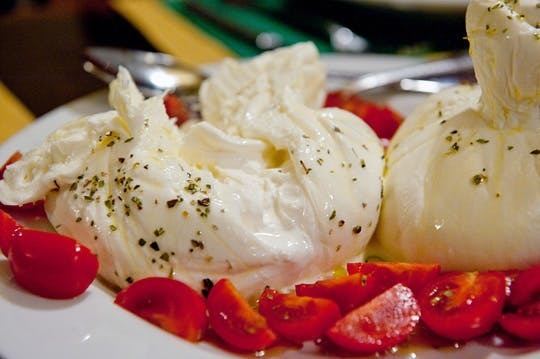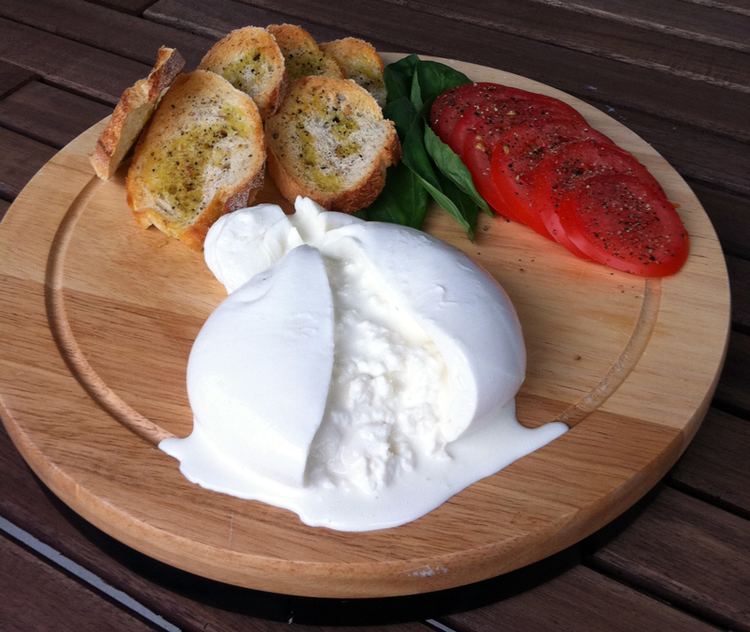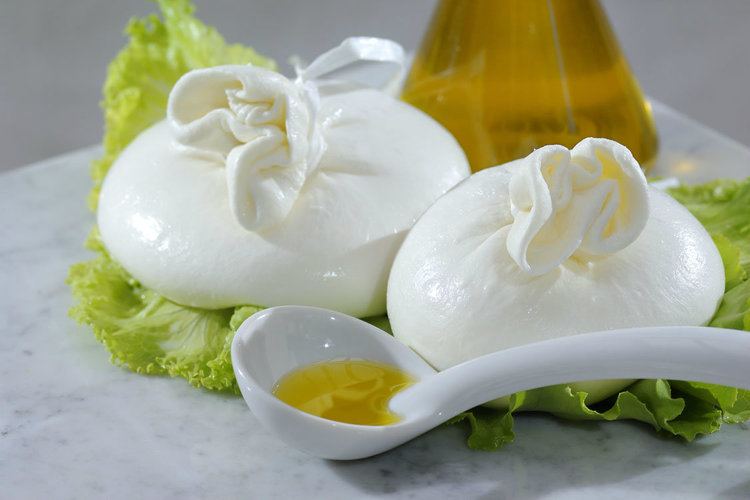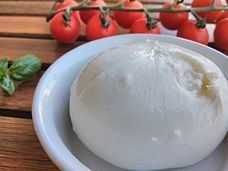Milk source Dairy cattle Region of origin Altopiano delle Murge Texture Soft | Rind Rindless Aging Fresh | |
 | ||
Similar Buffalo mozzarella, Mozzarella, Prosciutto, Stracciatella di bufala, Arugula | ||
Burrata puglia s molten mozzarella
Burrata is a fresh Italian cheese made from mozzarella and cream. The outer shell is solid mozzarella, while the inside contains stracciatella and cream, giving it an unusual, soft texture. It is also defined by some sources as an outer shell of mozzarella filled with butter or a mixture of butter and sugar. It is usually served fresh and at room temperature. The word burrata means "buttered" in Italian.
Contents
- Burrata puglia s molten mozzarella
- How to make burrata cheese at home food how to
- History
- Production
- Serving indications
- References

How to make burrata cheese at home food how to
History
Burrata is a typical product of Murgia in the south of Italy. It is produced from cow's milk, rennet, and cream. Burrata was probably first made around 1920, but may have origins dating back to about 1900 on the Bianchini farm in the city of Andria within Murgia, an area in the Apulian region. In the 1950s, it became more widely available after some local cheese factories began producing it and it can be a useful way of using up the ritagli ("scraps" or "rags") of mozzarella.

Established as an artisanal cheese, burrata maintained its premium-product status even after it began to be made commercially in factories throughout Apulia.

Burrata is also produced in the United States, particularly in artisanal cheese shops in cities on the East Coast with historically large populations of Italian Americans.
Production

Burrata starts out much like mozzarella and many other cheeses, with rennet used to curdle the warm milk. But then, unlike other cheeses, fresh mozzarella curds are plunged into hot whey or lightly salted water, kneaded, and pulled to develop the familiar stretchy strings (pasta filata), then shaped in whatever form is desired.
When making burrata, the still-hot cheese is formed into a pouch, which is then filled with scraps of leftover mozzarella and topped off with fresh cream before closing. The finished burrata is traditionally wrapped in the leaves of asphodel, tied to form a little brioche-like topknot, and moistened with a little whey. The asphodel leaves should still be green when the cheese is served to indicate the cheese's freshness. More recently, the cheese is often sold in a plastic bag or container.
Serving indications
When the burrata is sliced open, a spurt of thickened cream flows out. The cheese has a rich, buttery flavor and retains its fresh milkiness. It is best when eaten within 24 hours and is considered past its prime after 48 hours. The flavor and different textures of the inside and outside make it go well with salad, prosciutto crudo, crusty bread, fresh tomatoes with olive oil, cracked black pepper, or pasta.
